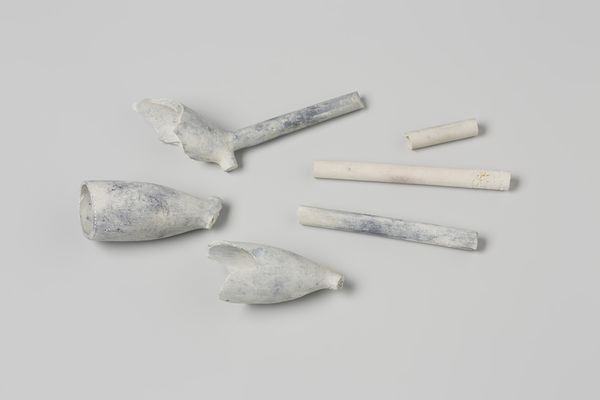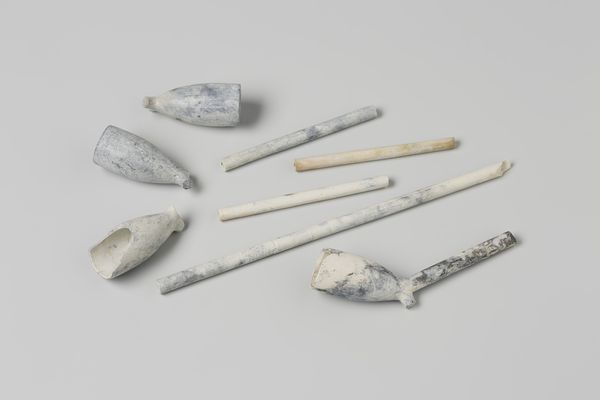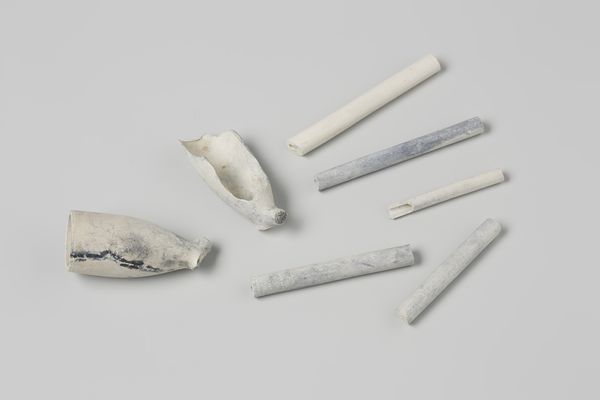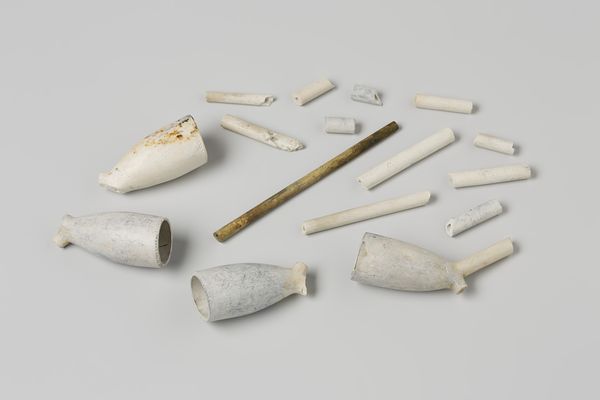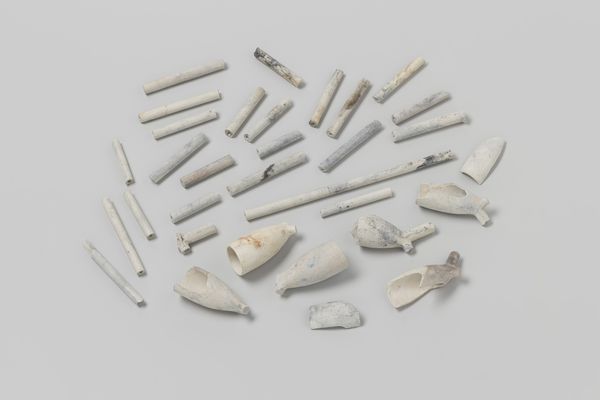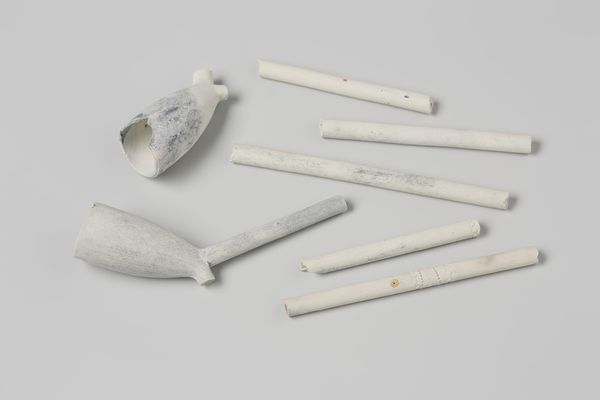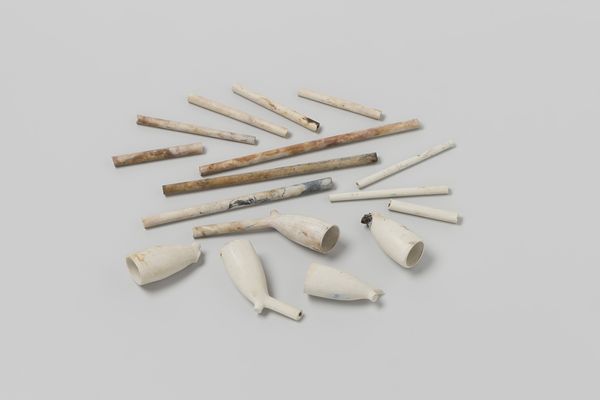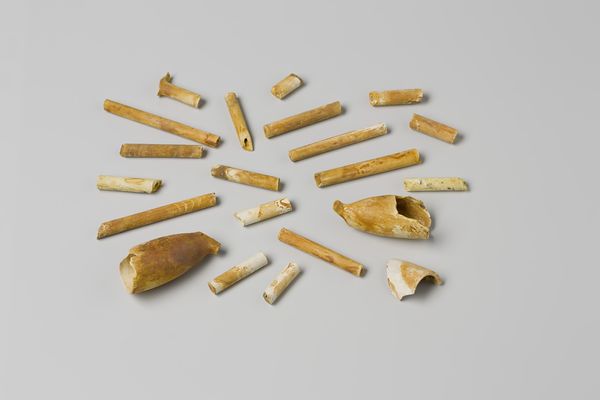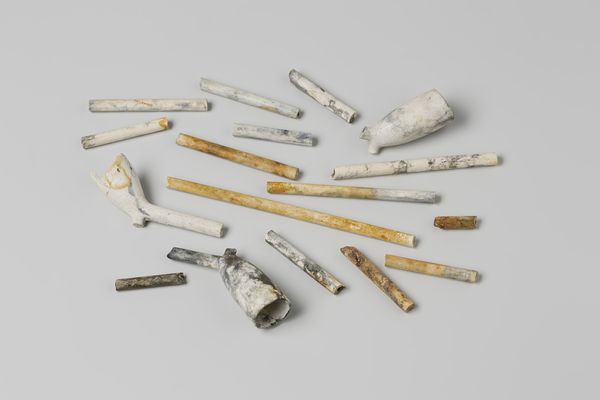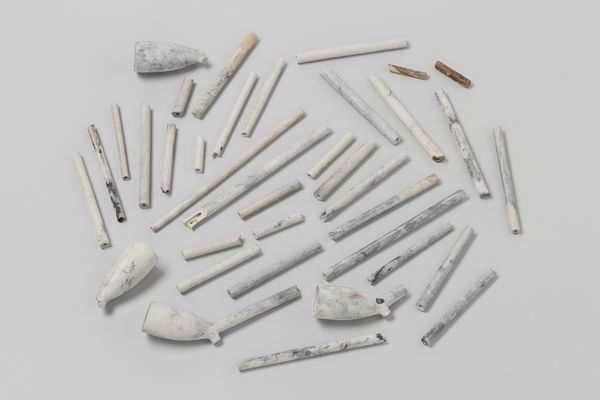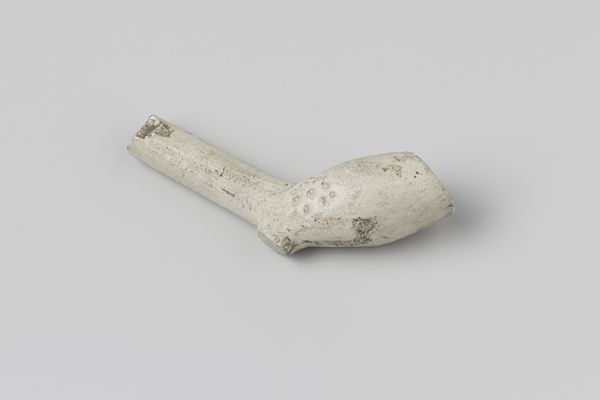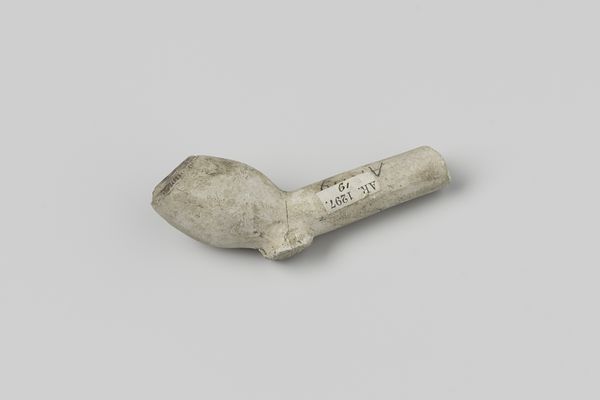
Fragmenten van pijpenstelen en pijpenkoppen uit het wrak van de Oost-Indiëvaarder 't Vliegend Hart Possibly 1700 - 1735
0:00
0:00
#
clear graphic shape
#
circular oval feature
#
3d printed part
#
rounded shape
#
virtual 3d design
#
round design
#
curved arc
#
3d shape
#
metallic object render
#
designed for kid
Dimensions: length 4.7 cm, width 2.1 cm, depth 2 cm, length 3.9 cm, diameter 0.6 cm
Copyright: Rijks Museum: Open Domain
Here are fragments of clay pipes salvaged from the wreckage of the Dutch East India Company ship, 't Vliegend Hart. The sinking of this ship speaks volumes about the fraught relationship between European expansion and maritime trade during the age of exploration. These pipes aren't just mundane objects; they offer us a tangible connection to the lives and experiences of those who sailed these colonial routes. Whether sailors, merchants, or enslaved peoples, the act of smoking tobacco held different meanings and implications for diverse groups. For some, it may have been a moment of leisure, for others a means of coping with the harsh realities of life at sea or a way to cement social bonds. Consider the labor and resources extracted from colonized lands to fuel this trade. The tobacco itself, grown on plantations reliant on enslaved labor, tells a story of exploitation and extraction. As you contemplate these fragments, reflect on their connection to broader narratives of colonialism, commerce, and the human cost of empire.
Comments
No comments
Be the first to comment and join the conversation on the ultimate creative platform.
